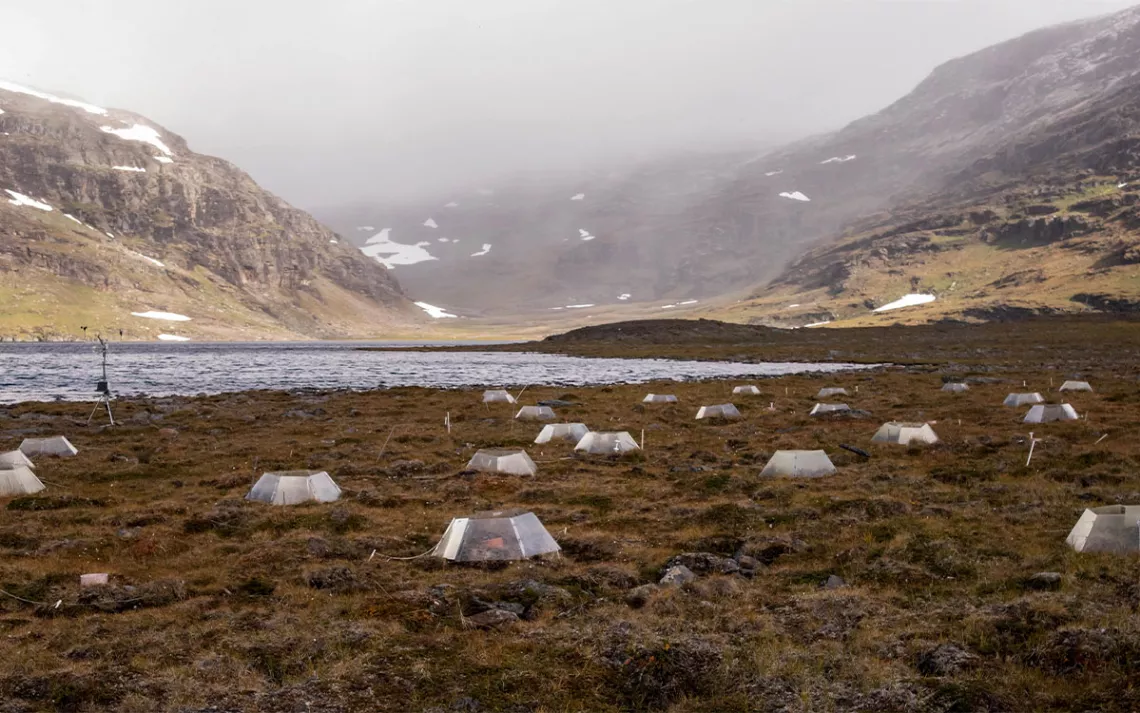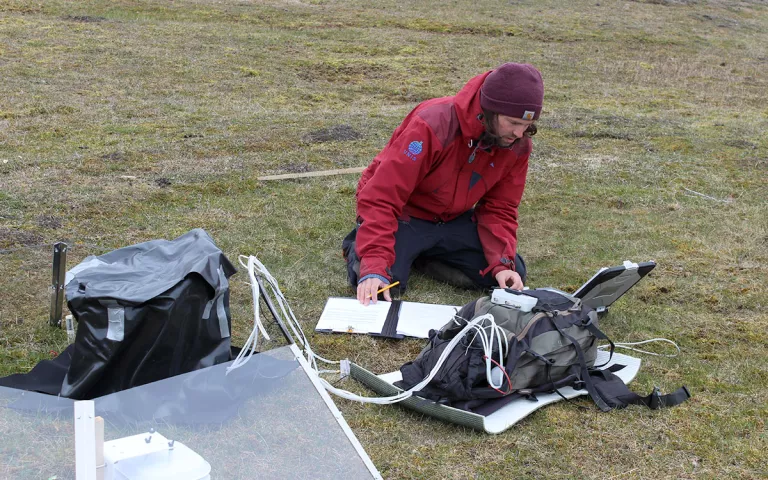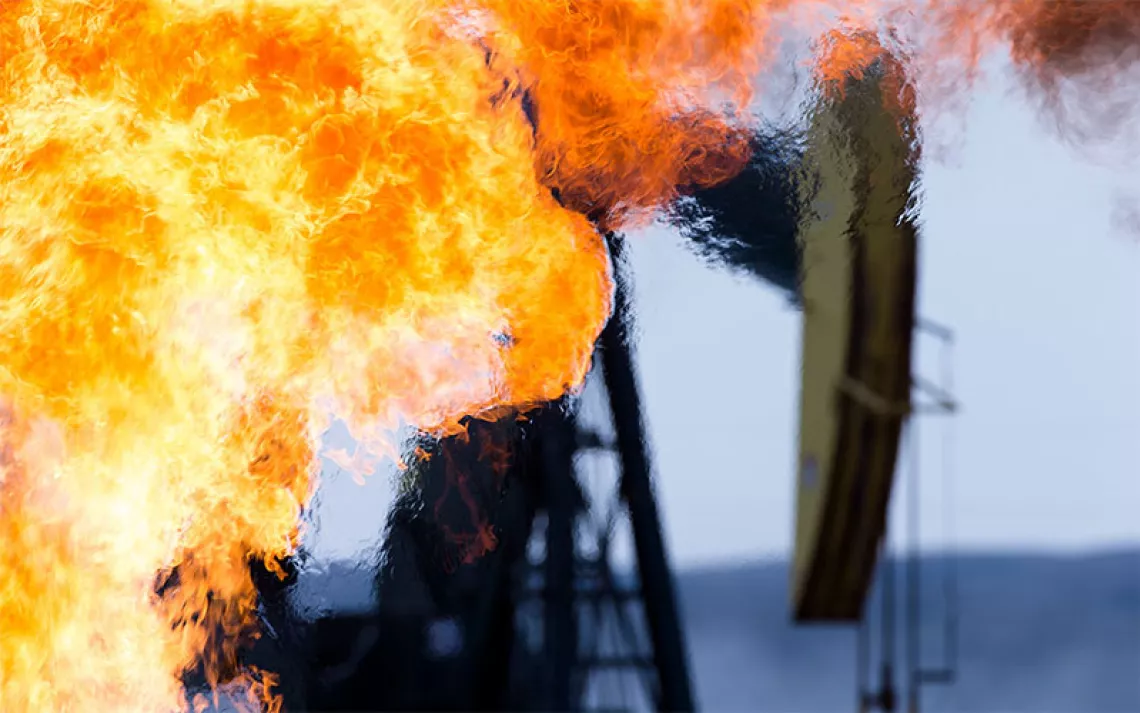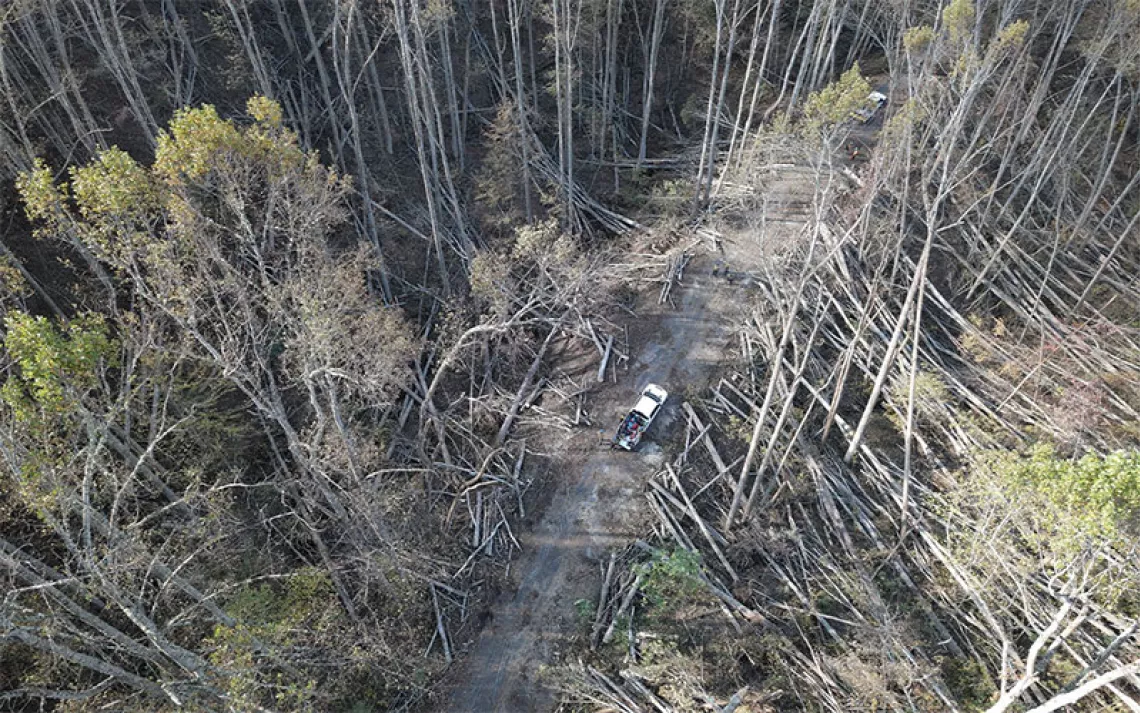Warming May Cause Arctic Plants and Microbes to Release Carbon They Currently Store
New analysis shows that over time, this process could turn tundra ecosystems from carbon sinks to sources of emissions

A set of open-top chambers set up in Latnjajaure, Sweden, one of the experimental sites used to measure the effect rising temperatures have on the release of carbon from tundra ecosystems. | Photo by Sybryn Maes
Beneath snow and the low-lying vegetation that can survive in a tundra’s frigid temperatures is soil that holds onto a massive store of carbon, keeping it out of the atmosphere. Unlike some of the world’s best known carbon sinks, which are dense forests—such as the Amazon—a tundra is a vast open landscape with views unencumbered by trees. Rising global temperatures threaten to upend this order, however, turning tundras from key areas of carbon sequestration into sources of carbon emissions. New research, published earlier this month in Nature, shows the likely role that plants and microbes will have in exacerbating these changing dynamics and helping scientists create more accurate climate models to predict the trajectory of global warming.
“Warming can strongly stimulate plants and microbes in the tundra system to become more active and respire more carbon,” said Sybryn Maes, a postdoctoral researcher at KU Leuven in Belgium and lead author on the paper. “We really need to have as much understanding as possible … in the current climate change context.”
To help understand how much carbon tundra soil could release if global warming continues unabated, the authors compiled data from 56 artificial warming experiments in Arctic and alpine tundra ecosystems. These data come from experiments that ran from less than one year up to 25 years. Each experiment used a piece of equipment called an open-top chamber, which has a top open to the elements and clear sides, creating a mini greenhouse. The simple setup works well for Arctic ecosystems, where there often isn’t an electricity hookup nearby that could power a soil heater or tall vegetation that would ruin the chamber’s warming effect.
“What’s valuable about this paper is that they focus on that Arctic tundra biome, and they then are able to pull together a pretty large number of experiments across a pretty large number of sites,” said Serita Frey, a professor at the University of New Hampshire who studies microbial and soil science.
The experiments raised the average air and soil temperatures inside the chambers by 1.4 and 0.4 degrees Celsius, respectively. The authors then investigated how these rising temperatures affect the plants and microbes inside the chamber environment. During photosynthesis, plants absorb atmospheric carbon dioxide and use it to produce a sugar. Respiration, which plants and many species of microbes both do, is the opposite: Plants break down this sugar in order to create energy, releasing carbon dioxide. Microbes release carbon dioxide when they break down organic matter, which is present in all soil but particularly abundant in the Arctic.
On average, there was a 30 percent increase in carbon dioxide release from the plants and microbes under warmer conditions during the growing season from June into August. This finding was much higher than Maes expected. While the authors were able to identify that both plant and microbe respiration played a role in this process, the exact portion that each contributed is unknown. Maes also found that differences in soil conditions between each artificially warmed site played an important role in the amount of carbon the mini environment released, with soil containing less nitrogen leading to more respiration.

Matteo Petit Bon taking respiration measurements from a warming experiment in Adventdalen, Svalbard during "dark" conditions. | Photo courtesy of Matteo Petit Bon
Joshua Schimel, a professor at the University of California, Santa Barbara, who was not involved in the study, said the methods used in this study are reliable and the results more or less expected. He adds that because the results don’t separate the amount of respiration coming from roots and microbes separately, it makes it difficult to assess how much of the total respiration is related to the breakdown of organic matter in the soil.
“What’s less sure is how much of that is increased respiration versus actual soil breakdown and decomposition,” Schimel said.
Plants and microbes have an invisible relationship beneath the soil. Microbes convert nitrogen into a form plants can use to grow, and plants secrete compounds that feed the microbes. In soils with low amounts of nitrogen, it pays off for microbes and plants to increase respiration in order for this relationship to become more beneficial to both parties.
Ecosystem respiration has a complex relationship with warming, according to Anne Giblin, a biogeochemist at the Marine Biological Laboratory, who was also not directly involved in this study. In this experiment, and other soil warming experiments in different ecosystems, under consistently warmer soil conditions the rate of ecosystem respiration can change over time. “It just goes to show that when we make our models, what’s going to happen in 100 years is uncharted territory,” Giblin said.
Frey runs multiple soil warming experiments in Harvard Forest, a long-term ecological research site in Massachusetts. One of her publications helped shine light on the long-term impacts of soil warming on microbial communities. While warming increased carbon release, after 18 years, soil microbes released less carbon than early in the experiment.
Maes emphasized that this study does only examine one part of a much larger picture. In the end, there will be multiple factors that determine if the tundra becomes a carbon sink or a source. Should the release of carbon outpace its absorption in the environment, it could create a feedback loop that continues to heat what is already the fastest-warming place on the planet.
Correction made May 1, 2024: An earlier version of this article misstated in a caption the location in which the depicted experiment took place. The experiment took place in Adventdalen, Svalbard, not Italy.
 The Magazine of The Sierra Club
The Magazine of The Sierra Club



